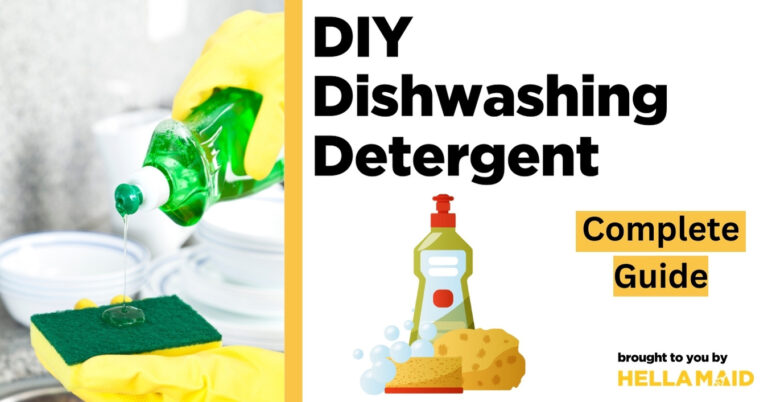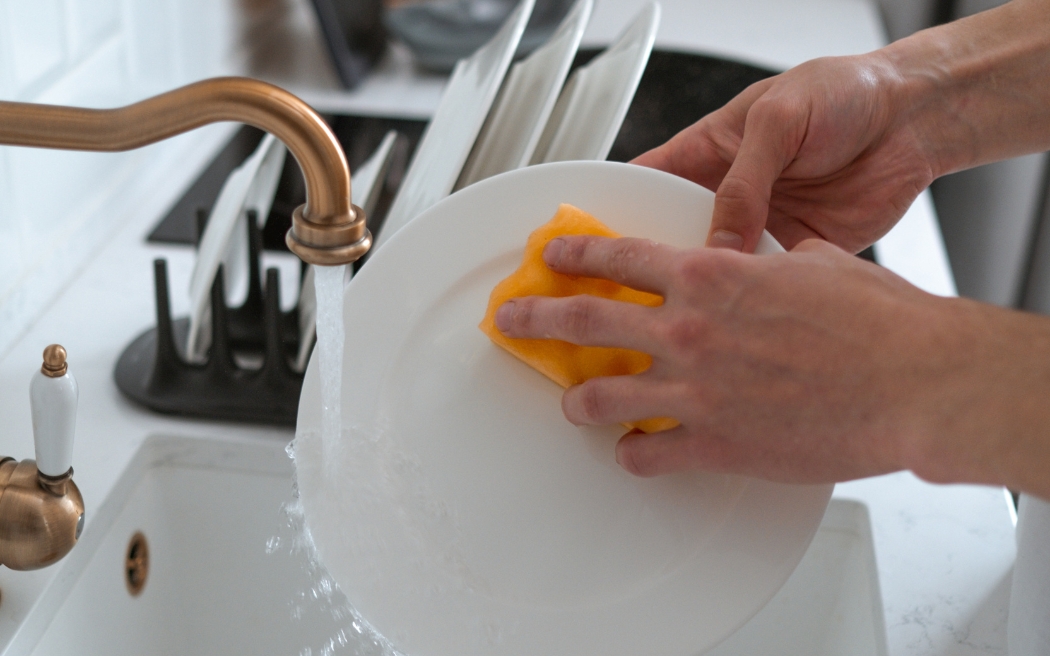In a world that is increasingly turning to sustainable living, crafting your own DIY dishwashing detergent is not only an eco-friendly choice but also a cost-effective and efficient alternative to commercial products. In this comprehensive guide, we’ll walk you through the process of creating your own dishwashing detergent at home. Say goodbye to harsh chemicals and hello to a greener, cleaner kitchen!
Why DIY Dishwashing Detergent?
Commercial dishwashing detergents often contain chemicals that can be harmful to the environment. By making your own detergent, you have control over the ingredients, ensuring a more eco-friendly cleaning for your dishes and the planet. Crafting your own dishwashing detergent is a budget-friendly option. Furthermore, most ingredients can be found in your pantry, saving you money in the long run compared to purchasing commercial brands.
Ingredients You’ll Need:
1. Baking Soda
Clean using baking soda as it acts as a gentle abrasive, aiding in the removal of grease and grime from your dishes.
2. Washing Soda
Washing soda is a powerful cleaner that helps break down tough stains and cuts through grease.
3. Citric Acid
Clean using citric acid as it adds a natural shine to your dishes and helps with the overall cleaning process.
4. Kosher Salt
Kosher salt acts as a natural scrubbing agent and helps to eliminate residue.
5. Essential Oils
Choose your favorite essential oil to add a pleasant fragrance to your DIY detergent. Options like lemon, lavender, or tea tree oil also contribute antibacterial properties.
Recipe for DIY Dishwashing Detergent
Follow the following steps on making DIY dishwashing detergent:
Step 1: Gather Your Ingredients
Collect all the necessary ingredients, ensuring that you have the right quantities for an effective dishwashing detergent.
Step 2: Mix the Dry Ingredients
In a mixing bowl, combine 1 cup of baking soda, 1 cup of washing soda, 1/4 cup of citric acid, and 1/4 cup of kosher salt. Thoroughly mix the dry ingredients.
Step 3: Add Essential Oils
For a pleasant scent and added cleaning power, add 15-20 drops of your chosen essential oil to the dry mixture. Moreover, mix well to distribute the fragrance evenly.
Step 4: Store in an Airtight Container
Transfer the mixture into an airtight container to prevent clumping and preserve the effectiveness of the ingredients.
How to Use Your DIY Dishwashing Detergent:
1. Pre-rinse Dishes
For best results, rinse off excess food from your dishes before loading them into the dishwasher.
2. Measure the Detergent
Use approximately 2 tablespoons of your DIY dishwashing detergent per load. Furthermore, adjust the quantity based on the size and dirtiness of your dish load.
3. Store Safely
Keep your homemade detergent in a cool, dry place, away from moisture, to maintain its effectiveness.
Tips for Success
1. Experiment with Essential Oils
Try different essential oils to find the scent that suits your preferences. Additionally, some oils, like tea tree oil, offer additional antibacterial properties.
2. Adjust the Recipe
If you find the detergent too abrasive or not strong enough, feel free to adjust the quantities of baking soda, washing soda, or citric acid until you find the right balance for your dishes.
Cons of DIY Dishwashing Detergent
While crafting your own dishwashing detergent offers numerous benefits, it’s essential to be aware of potential drawbacks to make an informed decision about its usage.
1. Residue Concerns
DIY detergents might leave a residue on dishes, especially if not rinsed thoroughly. Moreover, this residue could impact the appearance of glassware or the taste of certain items.
2. Hard Water Challenges
In areas with hard water, DIY detergents may not perform as effectively as commercial counterparts, leading to spots on glassware and less-than-stellar results on heavily soiled dishes.
3. Lack of Enzymes
Commercial detergents often contain specific enzymes designed to break down tough food residues. Furthermore, DIY versions may lack these enzymes, making it harder to tackle certain stains.
4. Time and Effort
Crafting your own detergent requires time and effort. If convenience is a top priority, the DIY approach may not be the most suitable option for everyone.
5. Variable Performance
The effectiveness of DIY detergents can vary based on the water quality, dishwasher model, and individual preferences. Moreover, it may take some experimentation to find the right formula for optimal results.
6. Essential Oil Sensitivity
While essential oils add a pleasant fragrance, individuals with sensitivities or allergies may react negatively. Furthermore, it’s crucial to be cautious and conduct patch tests if needed.
Crafting your own DIY dishwashing detergent is a simple, eco-friendly, and cost-effective way to keep your dishes sparkling clean. By taking control of the ingredients in your cleaning products, you contribute to a healthier home environment and a more sustainable planet. Moreover, give this DIY recipe a try and experience the satisfaction of a greener, cleaner kitchen. Cheers to homemade sparkle!





























